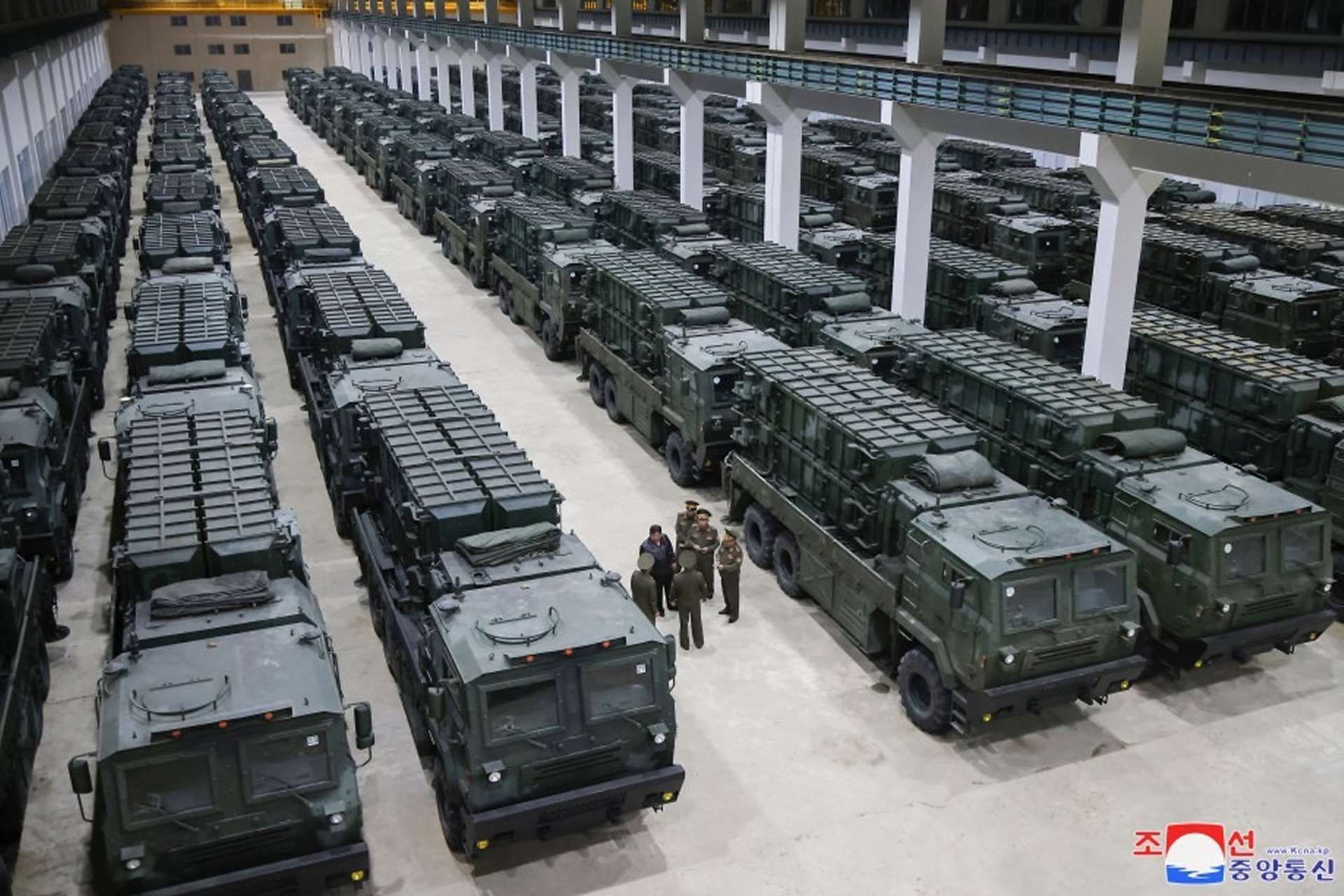Breaking news
North Korea Increases Production of Ballistic Missile Following Possible Request of Russia.
According to North Korea's KCNA news agency, North Korean leader Kim Jong-un has inspected the latest advancements in missile technology for the Korean People's Army (KPA). During his visit to the military-industrial complex on May 14, 2024, Kim expressed satisfaction with the production results of the first half of the year and emphasized the importance of meeting the 2024 military production plan to improve the army's war readiness substantially.
Follow Army Recognition on Google News at this link

State media reported that the visit highlighted the introduction of a new series of tactical missile weapon systems expected to be operational by the end of the year (Picture source: KNCA)
State media reported that the visit highlighted the introduction of a new series of tactical missile weapon systems expected to be operational by the end of the year. These systems are particularly intended for KPA artillery units, which perform critical firing duties. The inspection focused on the production scale of transporter erector launchers (TEL) for the Hwasong-11D short-range ballistic missiles. The Hwasong-11D is a modified, smaller variant of the KN-23 missile, known locally as Hwasong-11Ga. It has an estimated range of 100 to 180 kilometers and can deploy four missiles per launcher.
The missile follows a quasi-ballistic trajectory, reaching an altitude of about 50 kilometers where the atmosphere is still dense enough to allow mid-flight course adjustments via its fins. This low apogee, combined with a brief flight time and terminal maneuvering capabilities, makes it difficult for traditional missile defense systems to detect and intercept. Additionally, the increased accuracy of the Hwasong-11D means fewer missiles may be needed to effectively neutralize a target.
North Korea has recently intensified its deliveries of arms and ammunition to Russia, thereby supporting Russian military efforts in the war in Ukraine. According to diplomatic sources and intelligence services, Pyongyang has shipped various types of military equipment, including artillery shells, rockets, and light ammunition. Moreover, it is believed that North Korea has also supplied short-range missiles and anti-tank missiles, significantly bolstering Russia's offensive capabilities.
This cooperation between the two nations is part of a broader context of strengthening bilateral ties and mutual support in the face of international sanctions and diplomatic isolation. The supply of these weapons by North Korea aims to help Russia overcome its logistical and resupply challenges on the Ukrainian front while consolidating the strategic alliance between Moscow and Pyongyang.
In addition, the geopolitical situation of North Korea in its immediate environment is marked by persistent tensions with its neighbors, particularly South Korea and Japan. Relations with South Korea are characterized by an alternation of dialogue and confrontation, exacerbated by Pyongyang's frequent nuclear and ballistic missile tests. These tests are perceived as direct provocations, threatening the stability of the Korean Peninsula and prompting reinforced military responses from Seoul.
Additionally, Japan, also within the reach of North Korea's military capabilities, maintains a heightened state of vigilance, intensifying its defense cooperation with the United States to counter the North Korean threat. North Korea's missile tests, often launched towards the Sea of Japan, worsen already tense relations and strengthen regional alliances aimed at containing Pyongyang's military influence. These geopolitical dynamics create a climate of insecurity and uncertainty in the region, with potential implications for global security.


























